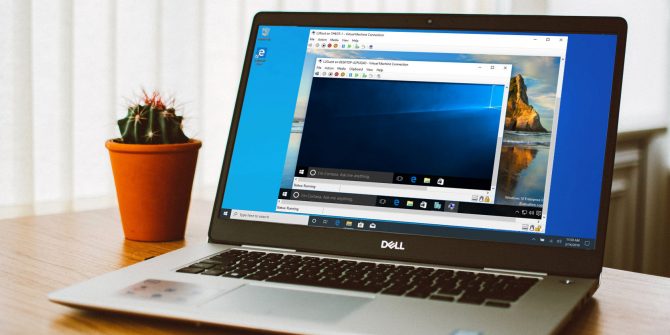A virtual machine(VM) is software that we install on our computer. This software enables us to simultaneously install and use other operating systems on our operating system. So, as you can see, we can use Windows, Kali Linux and Debian simultaneously with no problem on the same computer. Therefore, we can conclude that it is a program that will allow us to run multiple operating systems on the same hardware at the same time. The operating systems running and it are known as virtualized operating systems. Such virtualized operating systems can run programs and performing all the tasks we might do in a true operating system.
What characteristics does a Virtual Machine have?
Once we’ve defined what a virtual machine is, we can comment on the characteristics that most currently existing virtual machines have:
- Most virtual machines, such as Virtualbox or VMWare, allow virtually any operating system like Linux, Android, Mac OS X, Windows, Chrome OS etc. to be installed. Nevertheless, there are other virtual machines, such as Virtual PC, Hiper-V, or Parallels, primarily intended for Windows virtualisation.
- Every operating system we virtualize is wholly independent from the other operating systems. In this way, if one of the virtual machines stops working, the remainder will continue to work without any problem.
- Once a VM operating system is install, we must use the virtualize operating system in the same way we would use it if we had it install on our computer.
- A virtual machine has all the elements that a real computer has to offer. It has a hard disk, RAM, CD-ROM drive, network card, video card and so on, but unlike a real computer, these elements are virtual rather than physical.
- A collection of files encapsulates all of the features of a VM. It allows us to copy a virtual operating system from one device to another or we can make backup copies conveniently and very quickly without any problems.
How does a Virtual Machine Work?
It is very complicate to explain the comprehensive operation of a virtual machine. And that few people have the necessary knowledge to do so. Nevertheless, we can say roughly that a virtual machine is a device that interacts with the hardware that we have on our computer through a layer of virtualization, thereby emulating all the components of a real computer. So, the virtual machine will simulate a hard disk, a RAM memory, a network card, a processor, etc.
Once we know this when we open a virtual machine, such as Virtualbox. We have a graphical environment that will allow us to configure. And assign resources to each of the physical components that the virtual machine emulates.
So, for example in virtually all virtual machines we must define details of the following type:
- Space that we want to assign to our hard drive.
- RAM memory that we want to assign to the VM.
- The memory of our graphic card.
- The network configuration that we want.
Once these parameters are configure, we will have created a virtual machine to install an operating system. In this way we will only have to open the VM. That has just been created and install the operating system as if it were a real normal computer.



